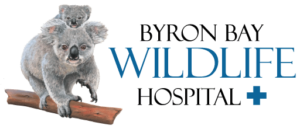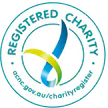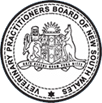
Collaborating across borders: l to r: Meg Butler (Wildlife Victoria), Russell Mills (Wildlife Recovery Australia), Tahlia Johnson, Amanda Gorvin (Byron Bay Wildlife Sanctuary), Lisa Palma (Wildlife Victoria), Dr Bree Talbot, Dr Stephen Van Mil (Wildlife Recovery Australia)
Wildlife Recovery Australia aspires to see wildlife hospitals – including mobile hospitals for disaster response – and specialist sanctuaries providing dedicated care for injured and orphaned wildlife in every Australian state and territory.
This needs cross-border collaboration, shared purpose and a government-funded wildlife care policy framework to support it.
Wildlife Recovery Australia proactively collaborates with rescue organisations and hospitals across Australia to share knowledge, discuss opportunities and plan projects to work together.
We recently hosted visits by representatives from Western Australia’s FAWNA Inc, Wildlife Victoria and Port Stephens Koala Hospital to discuss wildlife rescue, treatment and rehabilitation practice and share business opportunities All were aligned on chronic funding challenges, and a desire to contribute to government policy reform to better protect wildlife and biodiversity, and prevent further species extinction.

l to r: Suzi Strapp (FAWNA Inc), Dr Stephen Van Mil (Wildlife Recovery Australia), Kerry-Ann Manning (Northern Rivers Wildlife Carers), Jeanette Dundas (WIRES Northern Rivers), Toni York (FAWNA Inc), Sue McGann (FAWNA Inc), Russell Mills, (Wildlife Recovery Australia)
Australia has the highest rate of mammal extinction in the world. 144 animals, plants and ecological communities were added to the national list of threatened species in Australia in 2023, five times more than the yearly average.
Every category of Australia’s non-urban environment has deteriorated since 2016 according to the latest State of the Environment Report.
The 2019-20 Black Summer bushfires killed or displaced three billion native animals.
These are terrible statistics demonstrating this is an environmental emergency on a national scale.
The wildlife sector comprises veterinarians, wildlife rehabilitators, and the interested general public. All these groups donate time and resources to care for wildlife, including during natural disasters. All these groups do so at their own expense, and often endure great emotional stress and trauma in doing this essential work.
Australian state and territory governments are legally responsible for the protection of native animals. The government makes laws requiring members of the public to take injured native animals they encounter to the nearest vet or wildlife rescuer. They also make laws that require professional vets to treat native animals presented to their clinic or hospital.
The government does not pay for these services.
We call on state, territory and Australian governments to act on the urgent critical need and ethical imperative to fund the veterinarians, nurses, carers and volunteers the government relies heavily on to relieve suffering and rehabilitate sick, injured and orphaned native animals to be secure in the wild.




